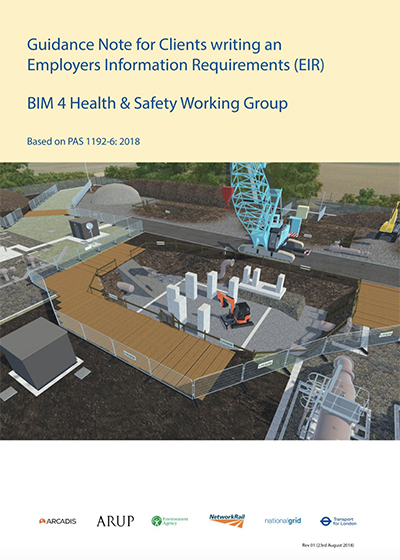Stephen Coppin, associate technical director at Arcadis, explains new guidance for complying with CDM using BIM.
Consideration of health and safety information requirements is critical from the outset of a project. The Construction (Design and Management) Regulations 2015 place duties on clients, principal designers, designers, principal contractors and contractors to share and use health and safety information.
There is great opportunity to use BIM to support the delivery of health and safety compliance and improvement. Key ways this can be achieved are:
- 3D models in the design phase to provide visual pictures and animations.
- 4D animations which show construction over time.
- The development of an effective and integrated Common Data Environment.
In a world where everyone is striving for effective digital delivery and solutions it is vital that the integration of BIM requirements and health and safety is considered early so that there is seamless integration and greater efficiency. Too often this is left too late in the process meaning opportunities are lost. The Employer’s Information Requirements have to be drafted clearly and correctly for opportunities to be maximised.

The HSE’s BIM4 sub-working group has now finalised the industry Employer’s Information Requirements (EIR) guidance for incorporating H&S Risk information.
The group is chaired by Gordon Crick of the HSE and consists of Andrew Rouse, Steve Coppin, Barry Gleeson, Paul Lee, Peter Nicholas, Roy Marshall and Margaret Sackey, and to National Grid and designers Premtech who designed and produced the PDF.
These members represent the Environmental Agency, Arcadis, Network Rail, National Grid, Arup, and TfL
This challenge has been recognised and the Health and Safety Executive’s BIM 4 Health and Safety Working Group has prepared Guidance Note for Clients Writing an Employer’s Information Requirements (EIR). This is a clear, how to guide outlining how the EIR should be drafted and integrated with BIM. It outlines 10 key questions that should help clients define their key issues based upon PAS 1192-6:2018.
Key principles include:
- Focus on the end result and what you want to achieve – make the EIR clear and effective.
- Incorporate the CDM Health and Safety File into the common data environment to ensure that pertinent health and safety information is retained effectively.
- Establish the common data environment early and clarify within the EIR how health and safety information will be stored and shared throughout the project lifecycle.
- Be clear on the data that should be recorded, shared and archived.
A pdf version of the guide is available through a link from the UK BIM Alliance newsletter.
The HSE is now looking for clients to showcase the utilisation of H&S in a digital form such as through BIM, in line with PAS 1192, particularly Part 6, which was published this year and deals with health & safety.
A particular aim is to assist principal designers and designers to comply with their legal duties on their projects. The guide is endorsed by UK BIM Alliance and gained further interest from the Network Rail BIM Steering Group and UK Gov BIM L2 Working Group.
The guide has 10 key questions for clients on what health and safety information to specify in an EIR template. These are as follows:
- What early project decisions will have health and safety implications for the operation and end use of the asset?
- Can the Common Data Environment (CDE) for this project enable health and safety information to be captured, stored and retrieved as needed at every stage of the project lifecycle and affect parties beyond the project?
- Has the relevant and good quality health and safety information (PCI) been provided to the design team?
- Have you specified reviews at key stages to enable collaborative working and feedback on risk management?
- What are the design risk objectives?
- Has a design plan been requested, inclusive of a collaborative design risk management plan?
- Has it been requested that models produced by the different design disciplines are capable of effective federation and that health and safety information can be conserved for re-use?
- What are the arrangements that will be put in place at the outset to ensure testing and commissioning is carried out effectively?
- What are the arrangements that will be put in place at the outset to ensure that information in a Health and Safety File is made available to the end user?
- How will the Client be able to ensure that lessons are learnt from this project experience, in relation to health and safety?
The HSE BIM Working Group through Roy Marshall of TfL and support from Steve Coppin have developed a presentation pack of the guidance to use via workshops to educate and assist clients and their project managers.
For more information contact Stephen Coppin, associate technical director, [email protected]













